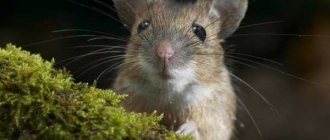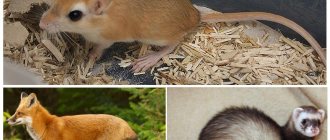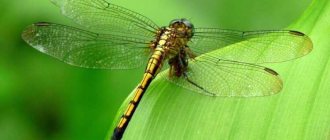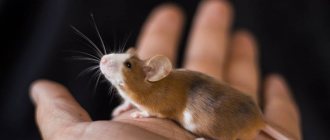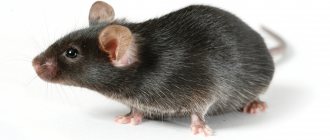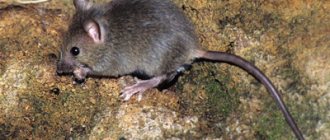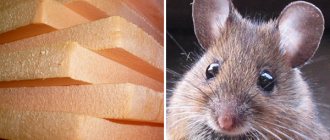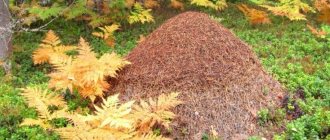Mice are rodents that live both in the wild and at home. They feed mainly on plant foods, although they will not refuse some food of animal origin. The diet of mice living in captivity should be as close as possible to the diet in natural conditions. However, the menu of rodents living in the wild depends on several factors: areola, time of year, type of mouse (forest, meadow, steppe, etc.).
Key features of diet in the wild
The diet of rodents depends on their habitat and season. For food, they choose foods high in carbohydrates. For example, fruits, grains, seeds. It is worth noting that mice are able to eat small portions for a long time when food is scarce. However, in special cases, hunger forces them to engage in cannibalism by eating their young.
Newborn mice feed on their mother's milk. This continues until they are able to chew solid food on their own. The mother brings food to the nest for stronger cubs, accustoming them to her diet. Mature mice begin to get their own food.
Wild rodents living in the city are omnivores. They eat both plant and animal foods. Mice are not averse to eating worms, snails, crickets and slugs. Also in urban environments, rodents feed on waste thrown away by people.
Rodents eat at least their body weight per day. The amount of food pregnant and lactating individuals eat increases. The peculiarity of the diet of all mice is that they do not eat the entire product, but gnaw it from the top.
How mice behave in their natural environment
In order for rodents to maintain a constant body temperature, they need to be active in winter and summer, day and night. Gluttony and fussiness for mice are characteristic traits that help them survive and leave offspring.
In the fall, animals begin collecting provisions in a burrow or on the surface of the ground, where the “warehouse” is camouflaged with earth. And if in the off-season rodents are awake at night and sleep during the day, then in winter they remain active around the clock. In spring and autumn, when there is no shortage of food and no temperature fluctuations, mice actively reproduce.
Mice live in large families, since together it is easier for them to defend themselves, get food, build homes, and raise offspring. In a mouse pack there is a leader who maintains order in the group. Female mice are peaceful. But young males do not always put up with their subordinate position. Stomping with its hind legs and aggressive tail strikes indicate the animal’s intention to conquer the “throne.” Inter-family clashes can lead to the disintegration of the pack.
Types of mice and their food preferences
There are several types of mice in nature. Each of them has a slightly different diet. For example, the menu of steppe rodents is dominated by cereals and larvae of small insects, while that of meadow rodents is dominated by grasses, berries and root crops. Forest mice prefer mushrooms, acorns and tree bark. Rodents that live near bodies of water eat mainly spiders, caterpillars and plant roots. Another type of mouse is the taiga mouse. The basis of their diet is lingonberries and cranberries.
How long do mice live?
The lifespan of rodents directly depends on environmental conditions. The average is 2-3 years. The greatest influence on the lifespan of animals is exerted by factors such as climate, nutrition, infectious diseases and attacks by wild animals.
Both frost and dry, hot weather can be detrimental to mice. Too sharp temperature fluctuations destroy numerous rodent colonies. Often the weather is related to the opportunity to eat well. An inadequate diet significantly shortens the life of a mouse.
Many species of mice that live away from people live a little less or more than a year. And an animal tamed by humans, receiving balanced nutrition and care, can live up to 6 years.
Diet of rodents at different times of the year
Under natural conditions, the diet of mice is determined by the time of year:
- In summer and spring, rodents eat plant foods.
- In autumn, mice prefer ripe fruits of fruit trees. Their diet also includes a lot of grains and seeds that remain in the ground after harvest.
- In winter, it is quite difficult for the animal to get food. In search of food, he gets closer to inhabited areas of land, destroying people's supplies. Mice choose carrots, potatoes, and beets as food.
In the wild, rodents consume little water. They get most of it from food. That is why rodents most often choose juicy fruits, vegetables and fleshy plant leaves.
The influence of seasons on the nutrition of mice
The food and amount that mice consume depends greatly on what time of year it is. Small pests are extremely sensitive to this, so their diet changes with the weather.
- Spring. In spring, mice live their normal lives after frost. Sometimes they return to fields and meadows, unless, of course, it is extremely dangerous to be in people’s homes.
- Summer. During the hot summer, voles live in their natural habitat. They only occasionally raid the gardens of summer residents in search of tasty beets and carrots. In the warm season, they mainly feed on berries and plant stems.
- Autumn. One of the most favorable times for mice. The hay collection begins in the field, leaving a huge amount of grains on the arable land. Haystacks are excellent winter housing for mice. In the fall, many fruit trees ripen; sunflowers ripen towards the end of summer; mice will never refuse this.
- Winter. Mice never hibernate; on winter days and evenings they are no less active than in summer or autumn. And since they are hungry in winter, this forces them to run to people to replenish supplies that could suddenly run out.
Seasons also affect what mice eat
Eating at home
Mouse breeders know firsthand how important a balanced and proper diet is for a rodent. Not only the pet’s health, but also its appearance depends on it. The menu for mice at home should be as close as possible to how the animal eats in the wild.
The easiest way to provide your mouse with the right diet is ready-made food. You can buy it at any pet store. When choosing industrially produced food, you should pay attention to its composition. It should not contain husks, coarse herbs, chemical additives, or dyes.
You should not give your rodent food that contains predominantly peanuts, oats, cumin, or sunflower seeds. These products contain a large amount of fat, which will cause obesity.
What harm can voles cause to mice?
Small rodents can cause significant harm to humans. Animals are capable of causing significant damage to plants.
Apodemus agrarius
They gnaw their parts underground, spoil the bark of seedlings, young garden trees and berry bushes, which causes their death. Mice gnaw on root crops as they grow, significantly reducing yield.
Everything is spoiled by the vole mouse that eats. If she visited the home, the volume of food will be noticeably reduced and it will be impossible to eat it.
Mouse in the house
The animal leaves “calling cards” everywhere - its droppings and urine. Another danger for humans is the possibility of contracting a dangerous, sometimes fatal infection after a vole mouse visits the house.
Such rodents can carry tularemia, typhus, leptospirosis, toxoplasmosis, hemorrhagic nephrosonephritis, and can cause dermatological diseases. It is a carrier of fatal rabies.
Natural diet
Mice have a fairly fast metabolism. Every 3 hours the rodent needs food. Based on this, you should regularly feed him fresh food. If this is not done in a timely manner, the animal may develop health problems.
A mouse living at home should receive 14% protein, 9% fiber and 10% fat daily. When compiling a diet, it is necessary to take into account the natural needs of the rodent’s body. The menu should include the following food:
- vegetables (cucumbers, zucchini, carrots, etc.);
- fruits (apple, banana, grapes, melon);
- grain (barley, wheat, rye);
- nuts (walnuts, hazelnuts, etc.);
- greens (parsley, sprouted grains, dill);
- berries (strawberries, currants, wild strawberries);
- quail egg,
- seeds.
Captive mice are often deficient in protein. To replenish it, you should include dried freshwater crustaceans, boiled quail eggs, and insects in your diet. If there is a lack of calcium and amino acids in the mouse’s body, it is recommended to add canned crickets to the menu.
We should not forget about the young twigs that the rodent needs to grind down its teeth. The mouse will not refuse rowan, apple and pine branches. It is also necessary to provide your pet with access to clean and fresh water.
As a treat, you can treat your pet with black bread and dried fruits. Everyone knows that mice love cheese. However, you should be extremely careful with this product, since its excessive consumption leads to obesity.
Please note that mice love cockroaches. If these insects are in the house, then rodents will hunt for them.
Reproduction in mice
The mouse is a polygamous animal. In nature, one male fertilizes from 2 to 12 females. Over 12 months, mice have from 3 to 8 litters. The female reaches sexual maturity 10 weeks after birth. At this time, she begins to go into heat, which lasts 5 days and is expressed in special behavior.
If after coating the female fails to become pregnant, a new estrus occurs within a week. If fertilization is successful, the female animal is expected to give birth in 17-24 days. There are from 3 to 9 cubs in one litter. Female mice give birth at night. Babies, when born, are unable to move, hear or see. They have no hair, and the size ranges from 2 to 3 cm. The little mice develop rapidly:
- 3 days - fluff appears on the body;
- 5 days - the cubs begin to hear;
- 7 days - the animal’s body weight doubles;
- 14 days - palpebral fissures appear;
- Day 19 - the mice begin to eat on their own;
- 25 days - the length of the body reaches 50 mm (the tail is 15-20 mm shorter) and the mouse is already sexually mature.
Decorative mice develop a little slower. It is recommended to mate them no more than 2-3 times a year. Repeated births exhaust the female, and each subsequent offspring becomes weaker.
What should you not give to mice?
A mouse can chew anything that gets in its way. However, many products can cause irreparable harm to her health. To avoid this, you need to exclude the following foods from your diet:
- pickles;
- smoked products;
- salo;
- potato;
- sweets;
- feed intended for other animals;
- white cabbage;
- tomatoes;
- citrus;
- onion;
- milk.
The choice of herbs should be approached with special responsibility. It is forbidden to give the mouse medicinal herbs with a bitter taste: celandine, wormwood, gentian, etc.
The diet of mice living in the wild and at home is approximately the same. Rodents are quite unpretentious eaters, so they are quite easy to keep. The most unfavorable time for mice living in captivity is winter. At this time, it is difficult for the rodent to find food.
